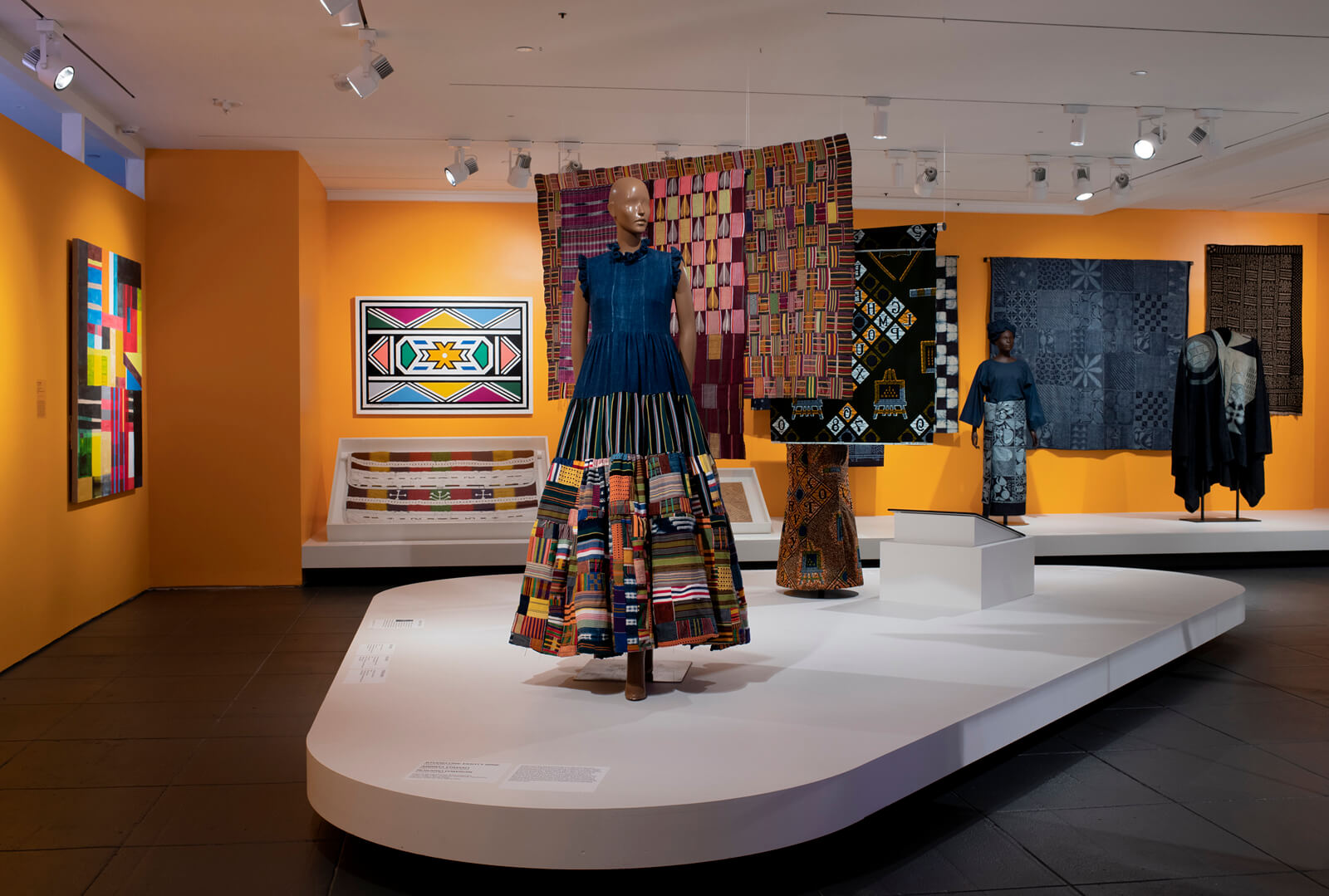1960 – the Year of Africa. The air was abuzz with revolution, 17 African countries gained independence that year.
As these nascent nation-states emerged from years of colonial rule, the decolonisation and reclamation of modern national African identities did not stop at the political realm. Music, culture—and even fashion—became vehicles through which a modern African identity was asserted.
Clothes were not just clothes. Clothes played a propulsive role in freedom movements, becoming visual symbols of a return to indigeneity and a rejection of the colonially imposed mass-market fabrics. Clothes could be seen as a second skin—telling us about where their wearers were from, their regional affiliation, and political aspirations alike.
Taking the Year of Africa as its starting point, the Africa Fashion exhibit at the Brooklyn Museum delves into these topics, traversing the landscape of what modern and contemporary fashion has meant in Africa.
The exhibition features over 300 works, including fashion, music, film, visual art, and photography, as well as textiles and jewellery from the Museum’s Arts of Africa collection to immerse viewers in an overview of the rich and exuberant sartorial history of the continent.
“Fashion is both multidimensional and a fabulous creative statement. Africa Fashion encapsulates this with beautifully vivid and interlocking perspectives. Music, art, cultural identity, and material culture are emphasised to create a rich sensorial experience,” says Annissa Malvoisin, who co-curated the exhibition with Ernestine White-Mifetu.
This link between national and regional identity and sartorial expression is established at the beginning of the exhibition through a timeline along with documentary photography chronicling the seminal moments of African history from the 20th century. Footage of key independence ceremonies is displayed, along with the flags of all the 54 African countries, along with interpretations of their symbolism.
<img src="https://news.myworldfix.com/wp-content/uploads/2023/11/5203_AfricaFashion_3.jpg" alt="Installation view, Africa Fashion. Brooklyn Museum, June 23–October 22, 2023. ” class=”full-width-image”>
Organised thematically into eight sections, the exhibition makes its way from illustrating instances such as Kwame Nkrumah, the first Prime Minister of Ghana, announcing Ghanaian independence dressed in a traditional Kente cloth to a contemporary model wearing a frilly, exuberant, bubblegum-colored creation from 2021 by Ghanaian designer Papa Oppong that has the satirical slogan “Vote for Corruption” emblazoned across it.
<img src="https://news.myworldfix.com/wp-content/uploads/2023/11/5203_AfricaFashion_4.jpg" alt="Installation view, Africa Fashion. Brooklyn Museum, June 23–October 22, 2023.” class=”full-width-image”>
It’s this kind of contrast between moments of gravity and playfulness, historical events and contemporary trends that makes the show a dynamic and exuberant spectacle.
This show could very well have been a fossilised expression of tradition and history.
What takes it beyond that is how it brings stories of African fashion visionaries to the forefront. The ‘Vanguard’ section of the show features garments made by luminaries such as Naima Bennis, a pioneering Moroccan designer who subverted traditional norms of Moroccan fashion by using materials typically fashioned into male garments for her female clientele. Alongside, we also see traditional Malian fabrics tailored into sharp dress-suits by Chris Seydou—almost Jackie O-esque in their structured precision. We also see headwraps—a category not often represented in Western fashion—by the legendary Nigerian designer Shade Thomas-Fahm.
This continuum between handloom and traditional fabrics and garments and their modern counterparts is captured through photographs by renowned photographers and artists such as Malick Sidibé and Hassan Hajjaj. Through their work, we see the outfits in motion—worn by people moving through space. We also glimpse studio portraits by photographers such as Michel Kameni of Cameroon, which offer us an insight into how regular Cameroonians were putting their best foot forward as they presented themselves up to be photographed formally.
If these images touch upon the intimate, the exhibition’s ‘Cutting Edge’ section takes us straight into the contemporary moment. Subdivided into sections such as “Artisanal,” and “Afrotopia,” it highlights the fresh talent emerging on the continent.
White-Mifetu underscores that “this exhibition is an important presentation of African creativity that highlights not only fashion but also the dynamic diversity of talent coming from the continent.”
Even as emerging designers from the continent engage with global markets and trends, their work remains deeply rooted in their context. On display, we see South-Africa based designer Thebe Magugu’s collaboration with stylist and traditional healer Noentla Khumalo on his Alchemy collection, which focuses on African spirituality and relationships with ancestors. Part of the research process for creating the prints for the show involved Khumalo throwing her divination tools—goat knuckles, dice and a whistle—onto a mat. Magugu abstracted these patterns into prints used through the collection. Similarly Lafalaise Dion from Côte d’Ivoire, dips into the legacy of the cowrie shell as symbol of wealth, prosperity and fertility to re-imagine it in the form of contemporary jewelry.
There are also challenges to tradition issued by designers such as Nigerian designer Adebayo Oke-Lawal whose label Orange Culture introduces fabrics and colours perceived as “feminine” to menswear. Gouled Ahmed from Djibouti—a costume designer, stylist, and photographer—introduces self-portraiture that subverts traditional cultural gender norms, specifically challenging the lack of representation of non-binary Black Muslims.

And of course, fashion on the continent is an ever-evolving, moving thing. It didn’t begin with the era the show kicks off with, and it most certainly doesn’t end now. To drive this point home, the exhibition also hosts a pop-up by ALARA, a Lagos-based luxury concept store. Items on sale underscore the global conversations and exchanges contemporary African fashion is part of. Like its historical counterparts and the show itself, these objects are exuberant, rooted in tradition while being immediate and relevant. If there’s one takeaway from the show, it is this: African fashion isn’t new…and it is very much here to stay.





